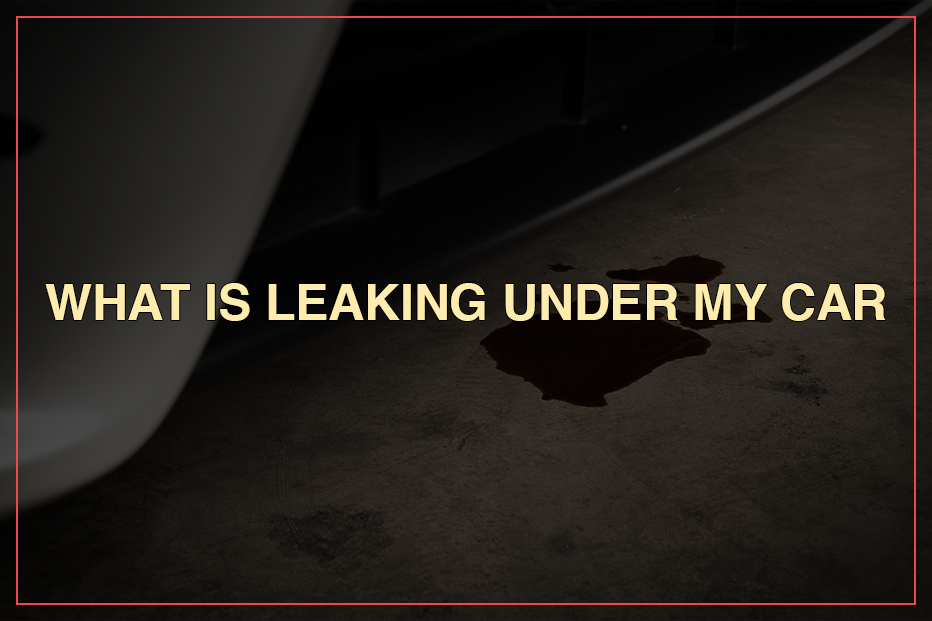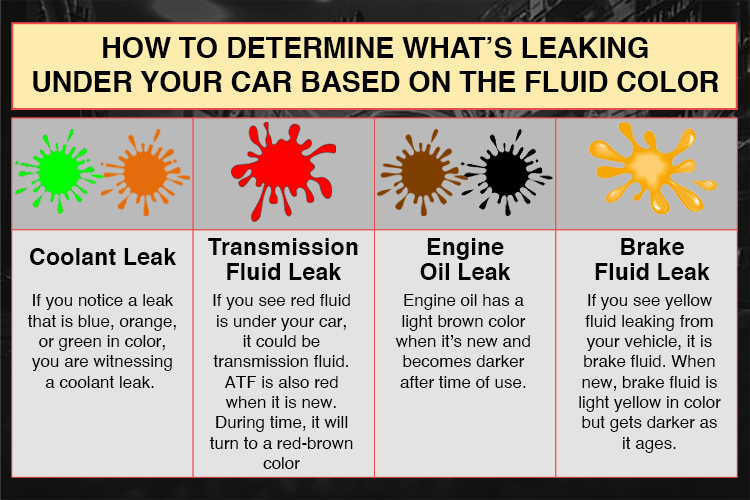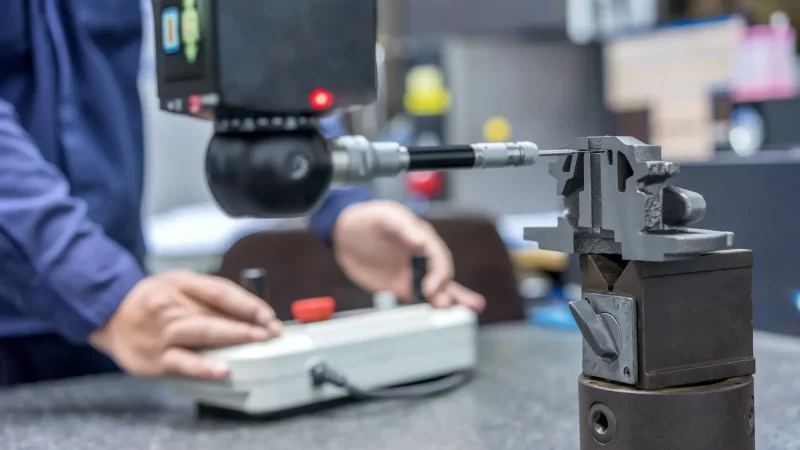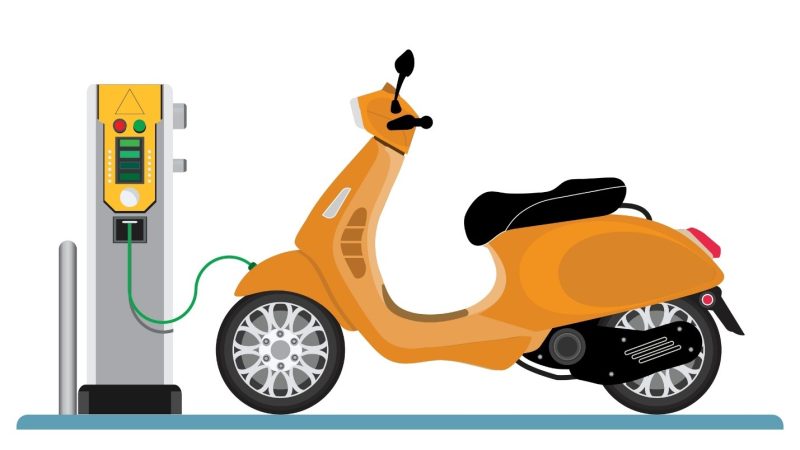What Is Leaking Under My Car?

Have you ever walked towards your car and noticed a strange wetland underneath it?
You probably didn’t know what it was, or maybe you did. There are several types of leaks, and while some might be mild, some may require an urgent response. Knowing the type of leak will help you diagnose the issue and fix it on time.
This article provides information on the common type of leaks, their symptoms, how to identify and fix them.
Coolant Leak

Leaks from cars can form puddles on the ground. There are many different oils and fluids in your car. They will have different colors by the dyes added to them to distinguish one oil from another. When you notice a puddle under your car, the first thing to do is to dip your finger in the fluid. Observe the color and smell it.
A coolant leak is bad for your car because it can lead to overheating. This can damage your car engine.
Coolant leaks have a characteristic color and smell; hence it’s quite easy to identify. If you discover green, blue, orange, or pink fluid leaks, it’s a precise diagnosis of a coolant fluid leak. If the fluid has a sweet smell, then it’s definitely leaking coolant. You may also notice steam or white smoke coming from under your hood. This is an indication of a coolant leak. This happens when coolant leaks into the combustion chamber of your engine.
How to Check
To find out where exactly the leak is coming from, place a piece of cardboard underneath your car and leave it there overnight. In the morning, take a look at the cardboard and trace the oil to the exact point with your eyes.
How to Fix
To fix a leaking coolant, you will need to find the cause of the leak. The major causes of a coolant leak are a broken hose, a blown gasket head, and a worn-out radiator. You can fix minor leaks in the radiator by using a chemical sealant that is usually added to the coolant stream. For severe leaks, you will need to replace the components or seek professional help from a technician.
Transmission Fluid Leak
Transmission leaks can be quite serious if it’s not addressed on time. Your car needs fluid, and without it, the car’s transmission will get damaged.
A transmission leak can be visibly seen dripping on the ground. After diagnosing a leak, look under your car to check for any leaks. If you notice a red-colored fluid leaking from the front of your car or just under where your car is parked, then you have a transmission leak problem. Smell the fluid. If it has a sweet aroma, then it is undoubtedly a tranny fluid. A transmission fluid leak may result in transmission slippage. You may experience a delay when you apply pressure on the accelerator.
How to Check
You can check the fluid levels using the dipstick. Make sure your engine is running hot and on a level surface. Take out the dipstick and wipe it clean. You will see an area with two dots and some hashes in between. Your transmission fluid should be in between those two dots. Reinsert it in and take it out again. Now observe your transmission fluid level. If it is below the area we mentioned, then your transmission fluid is low. However, if your transmission is sealed off, you may need to use an electronic indicator to tell you when the fluid is running low in your transmission.
Possible spots your transmission fluid can leak from are:
- The transmission pan gasket
- Front pump seal
- Fluid lines
- Output shaft seal
- Transmission drain plug
- The axle seal
Thoroughly check those areas, and after the diagnosis, proceed to fix the problem.
How to Fix
If you do have a transmission leak, it could be as a result of a loose bolt on the pan, a damaged seal, or a gasket. These issues are relatively easy to fix, given. If it’s caused by a damaged seal, you will have to add a transmission sealer to your transmission to stop the leak. Check for loose bolts around the pan and fix them by tightening them. However, for a proper check-up, have your car towed to your nearest technician to take a look at it.
Engine Oil leak
You can confirm an engine oil leak by inspecting the appearance of the oil. While minor leaks can be managed, it is advisable to have your car checked when you notice a leak. Oil leaks are known to lead to fire hazards and a damaged engine.
If the color of the liquid on the ground under your car is brown or black, it means you have engine oil.
How to Check
When checking for an oil leak, you can employ either of these three methods.
Use UV Light
For this method, you will need a UV dye, safety glasses, and UV light to find the location of the leak:
Step 1
You add the UV dye to the engine oil (make sure you’re using the recommended oil type for your engine).
Step 2
Start the engine and run the car for a few minutes and after that, turn it off. Depending on the severity of the leak, you may need to let it run for long.
Step 3
You can start shining the UV light around the engine to trace where the oil is leaking from.
Once you see a glowing green dye, you’ve found your leak spot.
Cleaning Your Engine
You will need a degreaser to do this. This method involves cleaning the engine, so you can easily spot where the leak is coming from. After cleaning, start the engine, run it for a bit, and then shut it down. Inspect the engine to see where the leak is coming from.
Using Baby Powder
This method uses baby powder to detect the leak. Apply the powder on the areas where you suspect the leak might be coming from. Start and run your car to let the oil leak onto the baby powder. Look for any area that appears wet or is stark white; that is the possible leak point.
How to Fix
The first thing is to detect the cause of the leak. The leak can occur for various reasons, including degraded engine gaskets, oil pan leaks, oil seals, or bad connections. Use a good stop-leak additive to safely stop the leak. These additives are effective to use where the leak isn’t severe. They might be less effective when used for major leaks. Check the oil pan drain plug for a loose bolt and tighten it. When the oil pan is punctured, you may need to replace it with a new oil pan.
Brake Leak
The brake fluid is a significant factor in your vehicle’s brake system. Without it, your brake system may not work. Severe brake leaks can result in brake failure. A situation where you will not be able to stop the car. You and I know how risky that can be.
Brake fluid, unlike other fluids, is colorless. This makes it hard to identify with just looking at the appearance. It is clear and has the consistency of cooking oil. When you put your finger on it and smell it, you will notice it has no particular smell. Also, your brake warning light illuminates whenever your car is low on brake fluid. Brake fluid leaks are serious and should be taken very seriously.
How to Check
Firstly, locate your brake master reservoir and check your fluid level. A low fluid level is evidence of a brake leak. In many cases, the leaks can be so small at times and hard to pinpoint. Nevertheless, go ahead with your visual inspection.
Fill up the master reservoir of your car with brake fluid (check your owner’s manual for the recommended brake fluid). Apply the brake to see where the leak is coming from. Look under your car for any wet spot. If you find one, it is most likely dripping from the brake line.
Another case scenario could be from the wheel caliper. Conduct an inspection under your car and the inner sidewall of the tire for leaks or wetness. If that’s not the case, then step on the brake pedal, if it drops to the floor, then it’s a sign there’s a problem with the master cylinder.
How to Fix
There are some common reasons why your brake fluid might leak. It could be a leaking brake line, worn brake components, leak in the master cylinder or faulty ABS. The best way to fix a brake fluid leak is a complete replacement of any failing brake component. Since the brake system is an integral part of your car and your safety, it’s most preferable to have it repaired by a professional.
How to Prevent Future Leak
Source: Photo designed by Freepik
Future leaks can easily be avoided by regular maintenance and routinely changing the oil. Consult the owner’s manual to check the recommended oil type for your car. When your car oil becomes dirty, it can lead to a leak and damage your engine. Always inspect your car oil and change it when you notice it’s dirty. Leaks can be prevented by giving proper care and the necessary maintenance to the car.
Final Words
The easiest way to check for oil leaks is by color and odor. If you suspect a leak in your car, conduct a thorough visual inspection to find the cause and type of oil leak. Once you are sure of the location, you can proceed to fix it yourself if it’s not severe or have it checked by a professional for severe cases.




